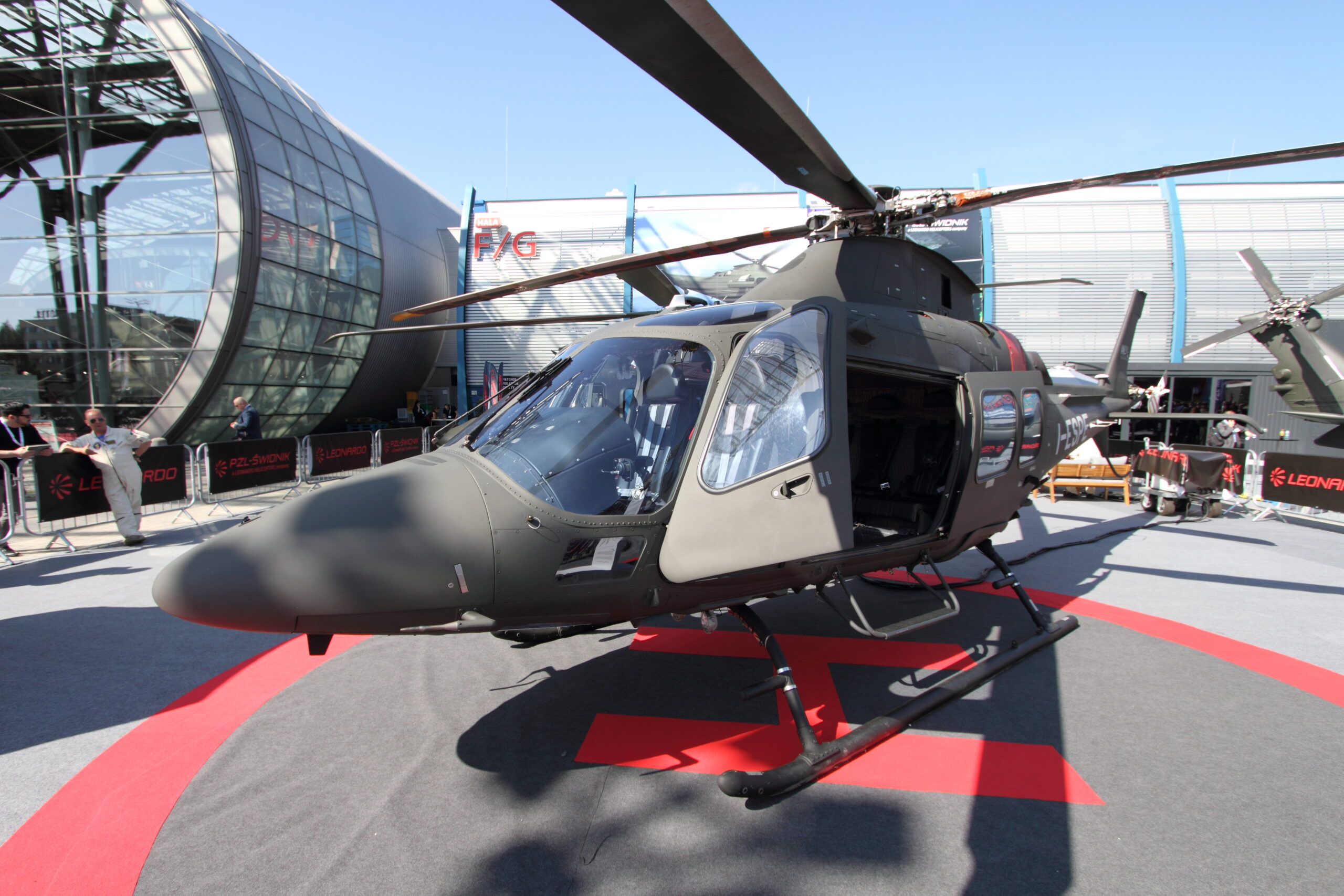On Tuesday, February 6th, in response to inquiries from the Editorial Team of MILMAG Military Magazine, Lieutenant Colonel Grzegorz Polak, spokesperson for the Armament Agency, informed about the interested entities participating in the market consultations for the acquisition program of an Integrated Training System for Combat Helicopter Pilots. Information about the intention to conduct consultations on this matter was published on January 14, 2024.
 One of the potential candidates: Leonardo/AgustaWestland AW109 Trekker / Photo: Grzegorz Sobczak, MILMAG
One of the potential candidates: Leonardo/AgustaWestland AW109 Trekker / Photo: Grzegorz Sobczak, MILMAG
The preliminary market consultations will be conducted between February 14 and March 15, 2024.
The MILMAG editorial team received the following response:
“We inform that as of January 29, 2024, 10 entities have submitted applications to participate in the preliminary market consultations regarding the acquisition of an Integrated Training System for Combat Helicopter Pilots:
- AIRBUS HELICOPTERS SAS,
- PZL-Świdnik
- PZL-Mielec
- Elbit Systems Ltd.,
- International Defense & Aerospace Group LLC,
- Polish Armament Group (PGZ)
- ETC-PZL Aerospace Industries Sp. z o.o.,
- Bell Textron Inc.,
- Babcock International Group,
- Consortium led by DM-MSB, and including Air Force Institute Of Technology, Motor Sich, Level 11 Sp. z o.o.”
The Armament Agency is interested in determining the possibility of acquiring a comprehensive solution consisting of:
- 24 helicopters configured for training with the use of aerial combat means;
- training system (simulators, trainers);
- logistics package;
- material support services (such as Performance Based Logistics);
- training package (training and courses);
- adaptation or construction of infrastructure closely related to the training system.
The consultations will include an assessment of the feasibility of meeting the preliminary requirements, defining the capabilities of the domestic industry in this area, specifying the conditions for acquiring a logistics security system, supply security, training, and implementation of related infrastructure, estimating the costs of acquisition, operation, and decommission of military equipment, including the implementation of related infrastructure and those intended for assembly and operation, preliminary determination of acquisition deadlines, and other factors depending on the needs.
Analysis
The list of ten entities (including one consortium) interested in participating in the preliminary market consultations consists of both helicopter manufacturers and specialized equipment providers.
The above procedure, laying the groundwork for the purchase of new training helicopters (successors to the SW-4 Puszczyk and Mi-2), stems from the wide-ranging programs for the modernization of helicopter fleets in the Polish Armed Forces, implemented in recent years, which include purchases of Lockheed Martin/Sikorsky multi-role S-70i Black Hawk International (6 out of 8 ordered received) for Special Forces, Leonardo/AgustaWestland AW149 multi-role support helicopters (3 out of 32 ordered received) for the Land Forces, and Leonardo/AgustaWestland AW101 multi-role maritime helicopters (all 4 ordered received) for the Navy.
Furthermore, the Armament Agency is negotiating the purchase of more helicopters for the Land Forces: an additional 22 AW101s in the transport version, 32 S-70i, and 96 Boeing AH-64E Apache Guardian attack helicopters (along with the bridging acquisition of 8 AH-64s from the US Army). It is also possible that the Navy will receive from 6 to 8 additional AW101s and from 4 to 8 multi-role maritime deck helicopters as part of the Kondor program, which will replace the SH-2G Super Seasprite.
Such expansion of the helicopter fleet with modern designs requires securing adequate modern training infrastructure for military personnel.





Comments
Nobody has commented on this article yet.